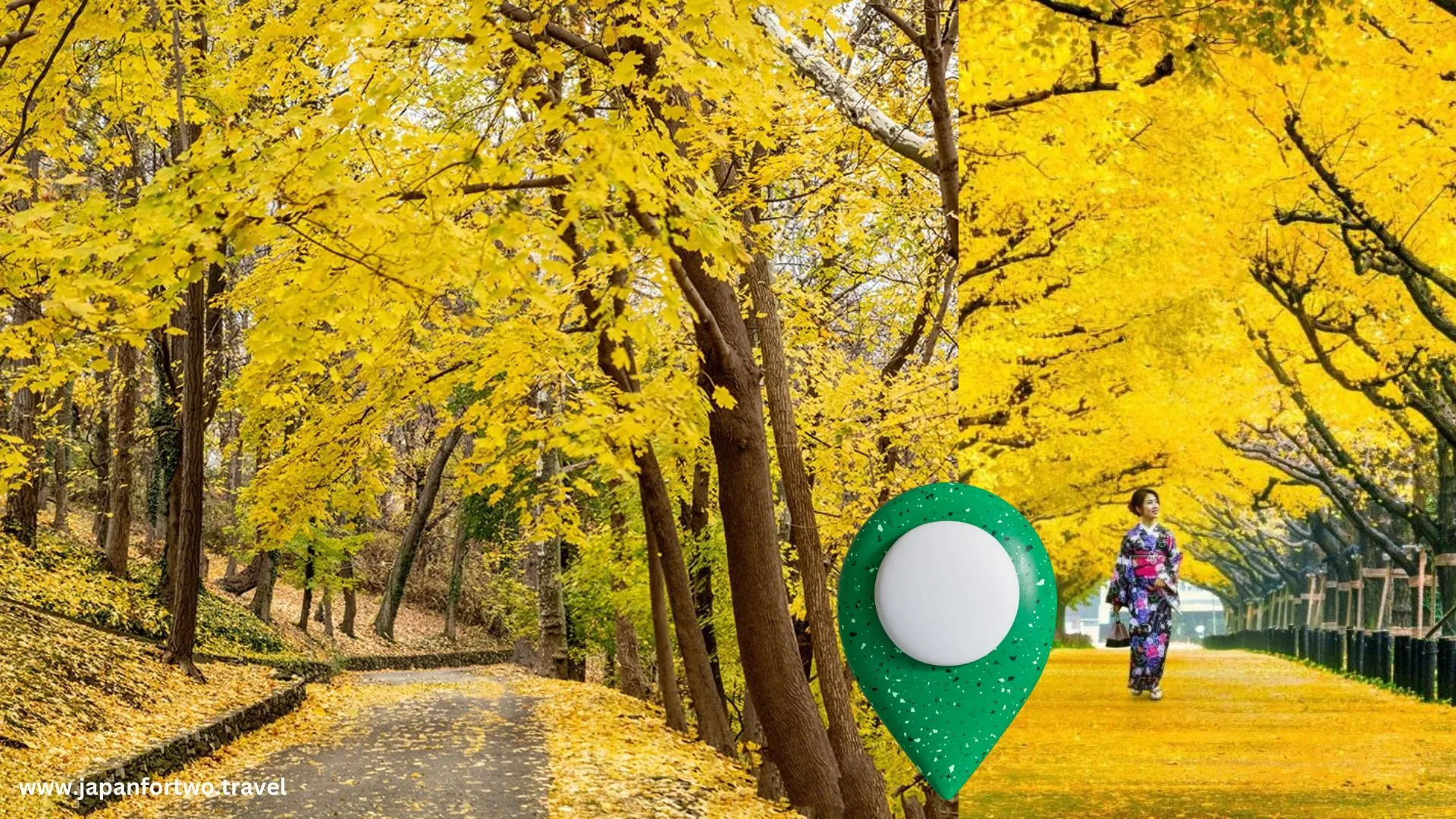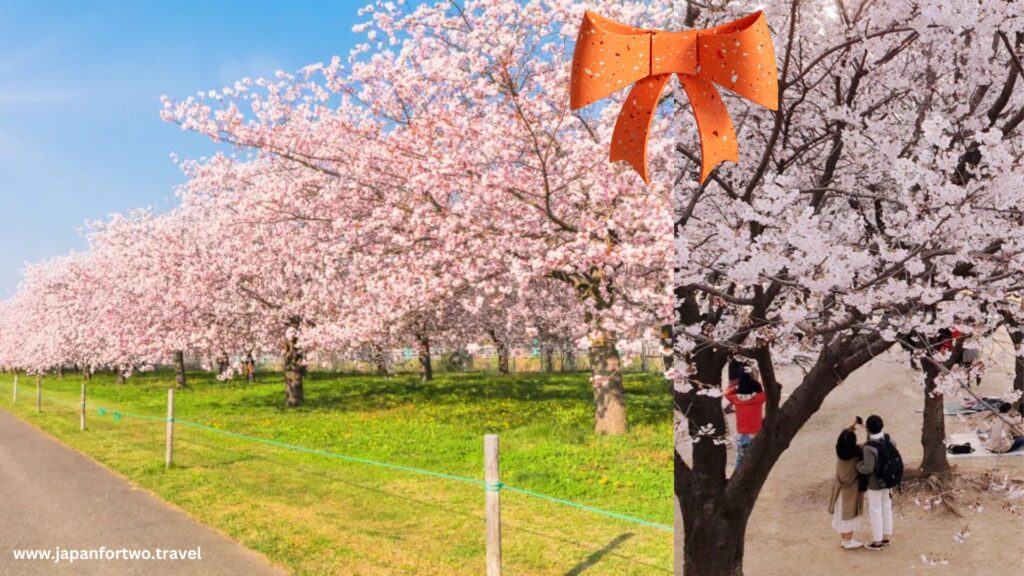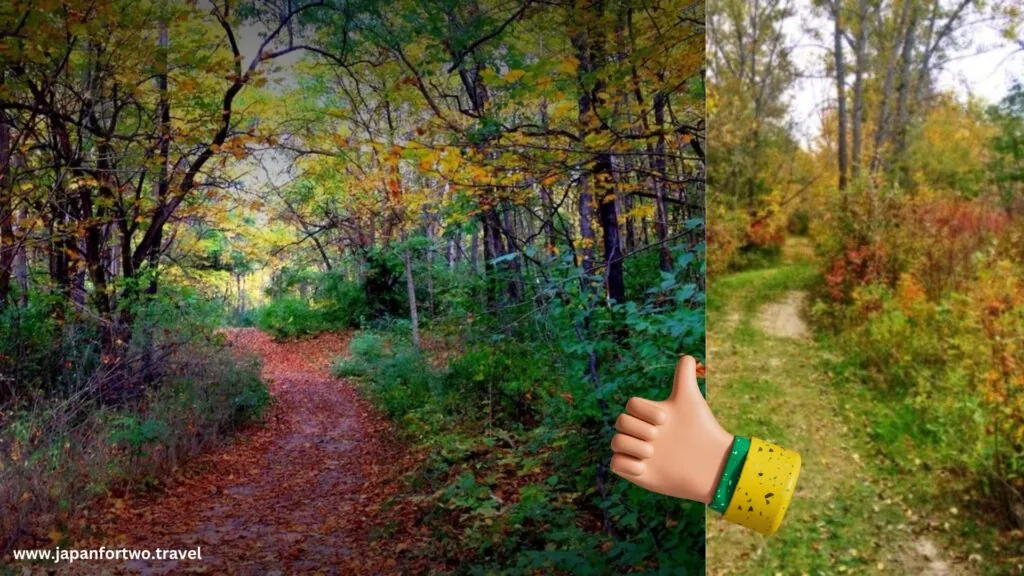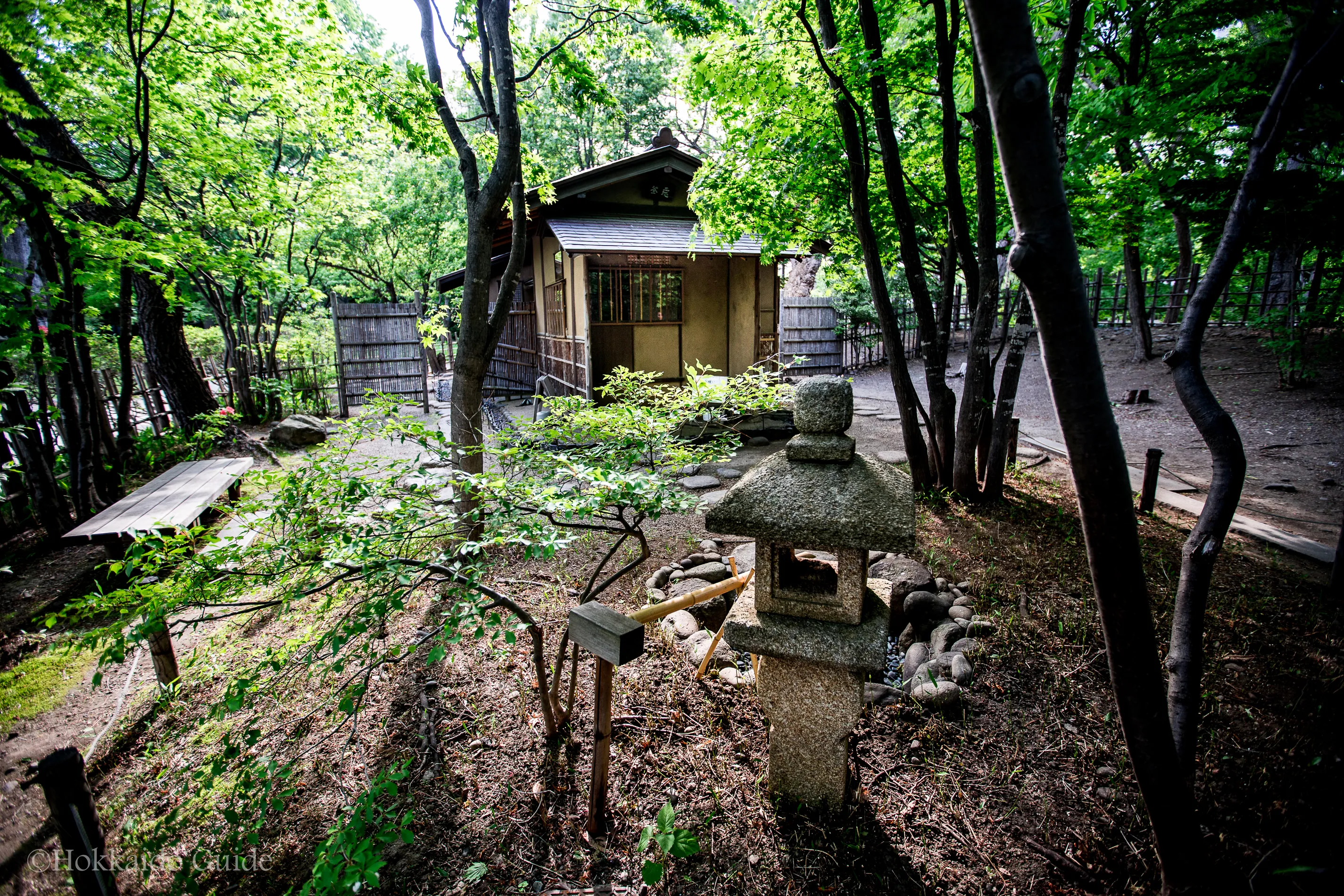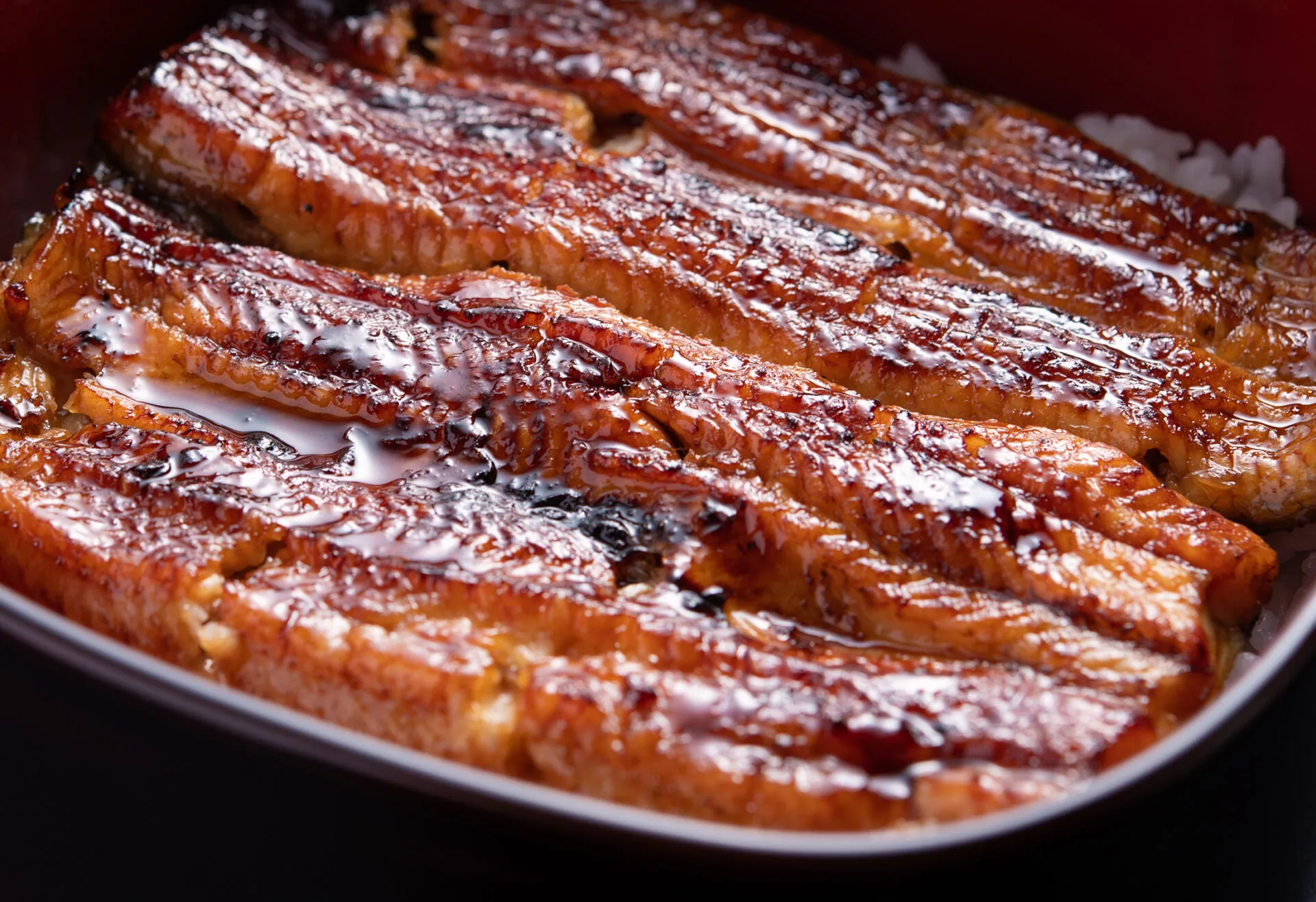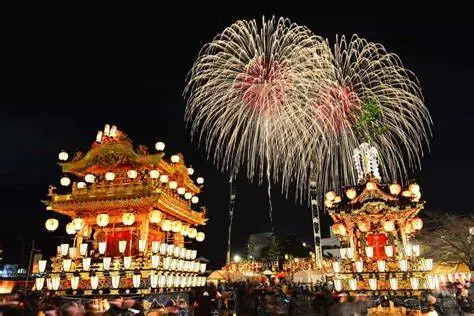Win a Free Trip to Japan!
Experience cherry blossoms and ancient temples
Yellow Spring Road is a captivating scenic route located in the heart of Japan, celebrated for its stunning natural beauty and tranquil ambiance. This picturesque road meanders through lush countryside, offering breathtaking views of rolling hills, vibrant greenery, and seasonal floral displays, such as cherry blossoms in spring and colorful foliage in autumn. Whether you’re a nature enthusiast seeking serene landscapes, a hiker exploring various trails, or a traveler eager to experience local Japanese culture, Yellow Spring Road Japan provides a perfect escape from the hustle and bustle of city life, making it a must-visit destination for anyone exploring Japan.
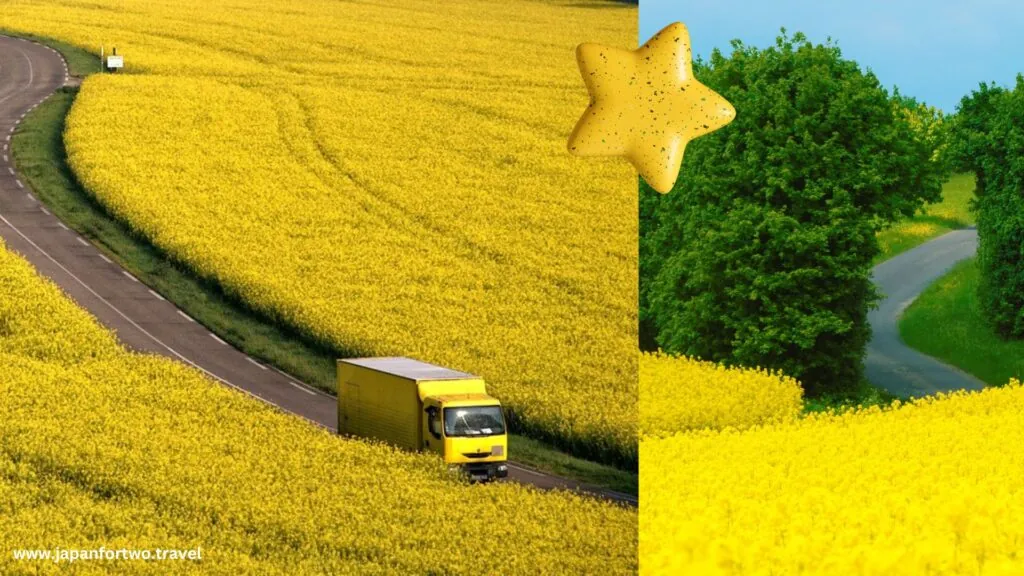
Where is Yellow Spring Road?
Yellow spring road location is situated in the charming town of Hirokawa, Japan. Nestled within this serene locale, the road stretches for 500 meters, offering an enchanting escape into nature. Hirokawa is known for its picturesque landscapes and tranquil ambiance, making it an ideal setting for Yellow Spring Road. The flat terrain of the road ensures accessibility for visitors of all ages and abilities, while the meticulously maintained, litter-free surroundings enhance the natural beauty of the area. This hidden gem provides a peaceful retreat, perfect for those looking to experience Japan’s scenic countryside.
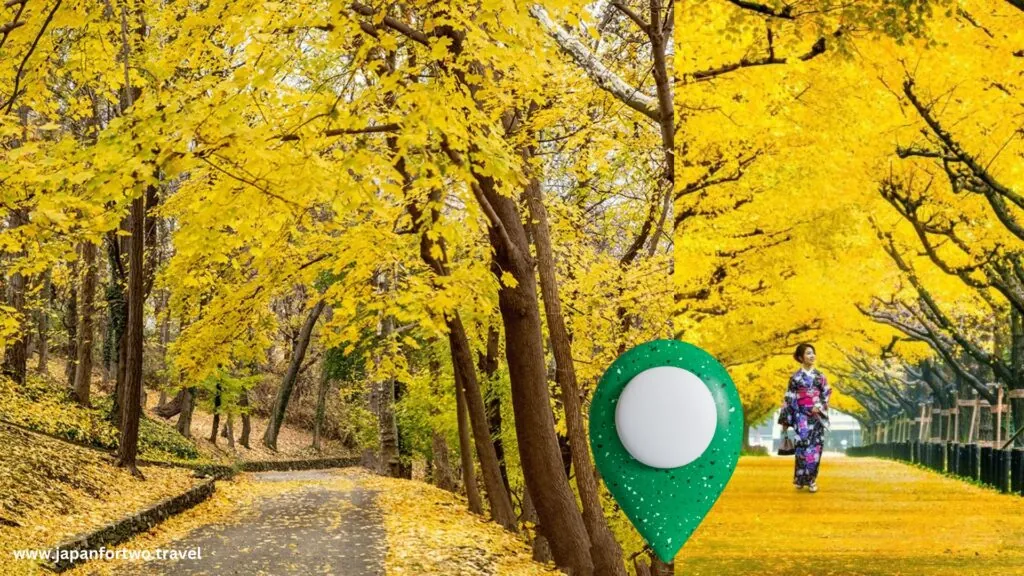
Best Times to Visit Yellow Spring Road
The best times to visit Yellow Spring Road in Hirokawa, Japan, are during the spring and autumn seasons. In spring, typically from late March to early April, the road is adorned with blooming cherry blossoms, creating a mesmerizing tunnel of pink petals that attract visitors from all over. This season is perfect for hanami, the traditional Japanese custom of flower viewing. Autumn, from October to November, transforms the landscape with vibrant hues of red, orange, and yellow as the leaves change color, offering a different but equally captivating experience. These seasons not only showcase the road’s natural beauty but also provide pleasant weather conditions ideal for exploring and enjoying the scenic surroundings.
Things to Do Around Yellow Spring Road
Exploring the area around Yellow Spring Road in Hirokawa, Japan, offers a variety of activities that cater to different interests:
1. Cherry Blossom Viewing
- When to Visit: Spring (late March to early April)
- What to Expect: Witness the stunning cherry blossoms in full bloom, creating a picturesque and serene atmosphere perfect for hanami (flower viewing).
Yellow Spring Road Cherry Blossom Viewing
Tips for Visitors
- Arrive Early: To secure a good spot for viewing and picnicking, it’s best to arrive early in the day.
- Bring a Picnic: Pack a picnic and enjoy a leisurely meal under the cherry blossoms. Many locals bring bento boxes filled with delicious food.
- Respect Nature: Remember to respect the natural environment. Avoid picking the blossoms or littering, and follow any posted guidelines to help preserve the beauty of the area.
Cherry blossom viewing along Yellow Spring Road is a magical experience that captures the essence of spring in Japan. It’s a perfect opportunity to immerse yourself in the beauty of nature and the rich cultural traditions of the region.The best time to visit for cherry blossom viewing is from late March to early April. During this period, the road is transformed into a breathtaking tunnel of pink petals as the cherry blossoms, or sakura, come into full bloom.
2. Hiking and Nature Walks
What to Expect
- Scenic Trails: The trails around Yellow Spring Road wind through lush forests, rolling hills, and vibrant fields, providing stunning views at every turn. Whether you’re an avid hiker or prefer a leisurely stroll, there’s a path for everyone.
- Seasonal Beauty: The landscape changes with the seasons, offering a unique experience each time you visit. In spring, the cherry blossoms create a magical canopy, while autumn brings a tapestry of red, orange, and yellow foliage.
- Flora and Fauna: The area is home to diverse plant and animal life. As you walk, you’ll encounter various native species of trees, flowers, birds, and perhaps even some wildlife, making it a great spot for nature enthusiasts and photographers.The natural scenery in the process of traveling is also not to be underestimated, they will bring you unexpected beauty.
- Therefore, whether it is animals, plants or beautiful cherry blossoms and grotesque
leaves, as long as you like, you can make their appearance into exquisite Custom Keychains as a souvenir of this trip!Years later when you see this exquisite workmanship,
colorful and unique Keychains, you can help but remember this wonderful trip, so
meaningful!
Popular Hiking and Walking Routes
- Cherry Blossom Trail: This trail is particularly popular in spring when the cherry blossoms are in full bloom. The path takes you through a tunnel of pink petals, offering plenty of photo opportunities and places to rest and enjoy the view.
- Autumn Foliage Trail: Best visited in October and November, this trail showcases the vibrant colors of autumn. The crisp air and beautiful leaves make for a refreshing and visually stunning hike.
- Forest Pathway: For those who enjoy shaded walks, the forest pathway provides a tranquil experience surrounded by tall trees and the soothing sounds of nature.
Tips for Hikers and Walkers
- Wear Comfortable Shoes: Ensure you have suitable footwear for hiking or walking, as some paths may be uneven or slightly rugged.
- Bring Water and Snacks: Stay hydrated and energized by carrying water and light snacks, especially if you plan to spend several hours exploring the trails.
- Check the Weather: Be aware of the weather forecast and dress accordingly. Layers are advisable, as temperatures can vary throughout the day.
- Respect Nature: Follow the “Leave No Trace” principles by not littering and staying on marked trails to protect the environment.
Nearby Amenities
- Rest Areas: There are several rest areas along the trails where you can take a break, enjoy a picnic, or simply take in the scenery.
- Local Eateries: After your hike, visit one of the local eateries near Yellow Spring Road to enjoy a meal featuring regional cuisine and seasonal specialties.
Hiking and nature walks along Yellow Spring Road offer a peaceful retreat into nature, allowing you to disconnect from the hustle and bustle of everyday life and reconnect with the tranquil beauty of the Japanese countryside. Whether you’re there for a vigorous hike or a gentle stroll, the experience is sure to be refreshing and memorable.
3. Photography
Yellow Spring Road in Hirokawa, Japan, is a paradise for photographers, offering a plethora of stunning scenes and picturesque moments year-round. Here’s why it’s a must-visit spot for capturing breathtaking photos:
Scenic Beauty
- Seasonal Transformations: Yellow Spring Road transforms with the seasons, each offering unique photographic opportunities. In spring, the cherry blossoms create a pink tunnel, while autumn brings a vibrant tapestry of red, orange, and yellow leaves. Winter’s bare trees and the lush greenery of summer also provide captivating subjects.
- Landscape Variety: The road meanders through rolling hills, verdant forests, and open fields, presenting diverse landscapes to capture. Morning mist, golden hour light, and evening shadows add different moods to your photos.
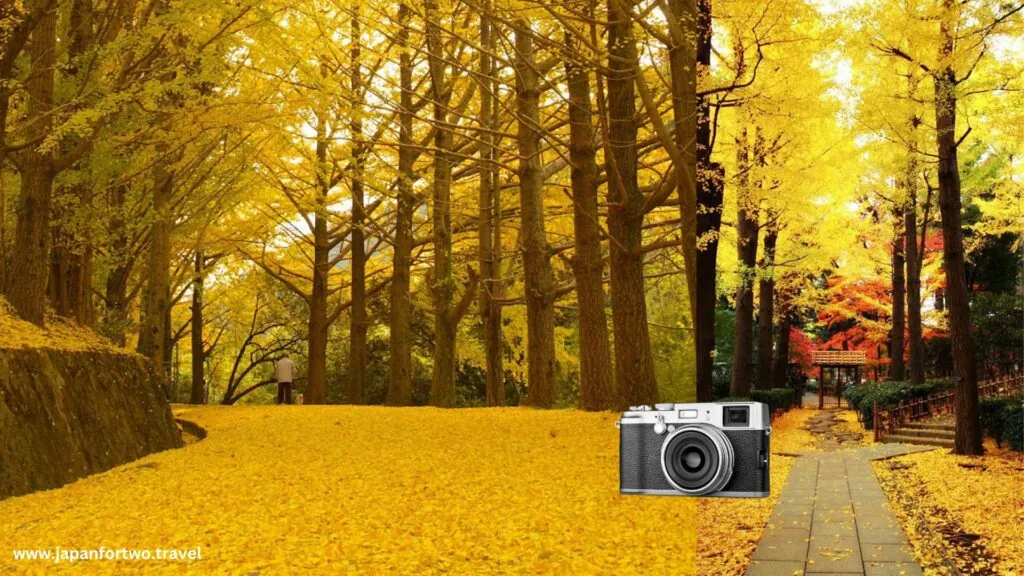
Key Photography Spots
- Cherry Blossom Tunnel: In spring, the cherry blossom tunnel is a must-photograph spot. The canopy of pink petals creates an ethereal and dreamy scene, perfect for wide-angle shots and close-ups alike.
- Autumn Foliage: Capture the vibrant autumn colors as the leaves change. Look for spots where the sunlight filters through the trees, highlighting the rich hues.
- Forest Paths: The shaded forest paths offer opportunities for capturing serene and mystical photos. Play with light and shadows to create depth and contrast in your images.
- Open Fields: The open fields along Yellow Spring Road are perfect for landscape shots, especially during sunrise or sunset when the lighting is most dramatic.
Tips for Capturing the Best Photos
- Golden Hours: The best times for photography are during the golden hours—early morning and late afternoon—when the light is soft and warm, casting a magical glow over the landscape.
- Tripod Use: For sharp and steady shots, especially in low light conditions, use a tripod. This is particularly useful for capturing long exposures and landscape scenes.
- Lens Selection: Bring a variety of lenses. A wide-angle lens is great for capturing sweeping landscapes, while a macro lens can highlight the details of flowers and foliage.
- Composition: Pay attention to composition. Use the rule of thirds, leading lines, and natural frames to enhance your photos. Experiment with different angles and perspectives to find the most compelling shots.
- Weather Considerations: Check the weather forecast. Overcast days can provide even lighting for close-ups, while sunny days enhance the vibrancy of the landscape.
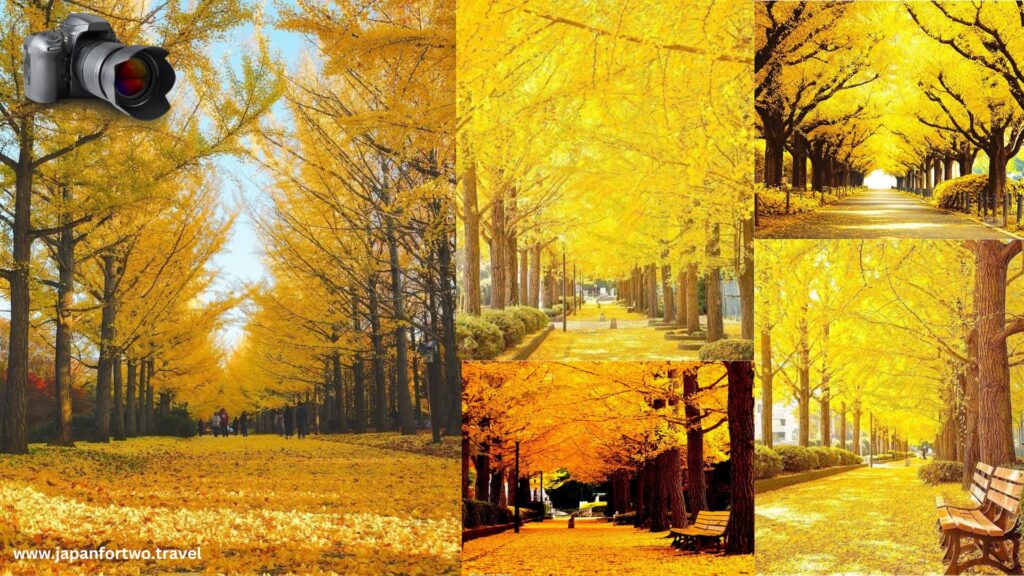
Respecting the Environment
While capturing the beauty of Yellow Spring Road, it’s important to respect the natural environment. Avoid disturbing wildlife, stay on marked paths, and refrain from picking flowers or damaging plants. Leave the area as pristine as you found it to ensure it remains a beautiful location for future photographers.
Yellow Spring Road offers endless opportunities for capturing the beauty of nature in all its forms. Whether you’re a professional photographer or an enthusiastic amateur, this scenic road in Hirokawa, Japan, promises unforgettable shots that showcase the stunning landscapes and serene ambiance of the area.
4. Local Tea Houses and Eateries
Visiting Yellow Spring Road in Hirokawa, Japan, is not just about the stunning scenery; it’s also an opportunity to indulge in the local culinary delights. The area boasts charming tea houses and eateries that offer a taste of traditional Japanese cuisine.
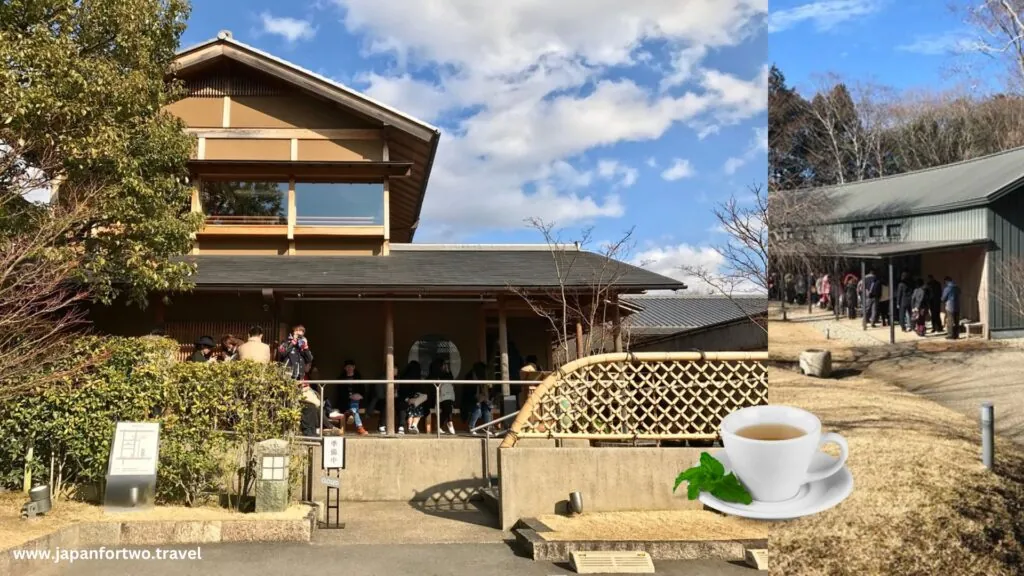
Local Tea Houses
- Traditional Ambiance: The tea houses along Yellow Spring Road provide a tranquil setting, often nestled amidst nature, allowing visitors to relax and enjoy their surroundings. Many of these establishments have traditional tatami mats, low tables, and sliding paper doors, offering an authentic Japanese experience.
- Tea Ceremony: Experience the Japanese tea ceremony, a cultural ritual that involves the preparation and presentation of matcha (powdered green tea). This ceremonial practice is both an art form and a way to enjoy the tranquility and simplicity of tea drinking.
- Seasonal Treats: Enjoy seasonal sweets such as sakura mochi (sweet rice cakes wrapped in cherry blossom leaves) in spring and chestnut-based desserts in autumn. These delicacies complement the various types of green tea available.
Yamecha Wholesaler Shigematsu Kakujuen (八女茶産地問屋 重松鶴壽園) Price : ~1500 ¥
Local Eateries
- Home-Cooked Meals: The eateries around Yellow Spring Road offer delicious home-cooked meals that highlight local ingredients and traditional recipes. Dishes often include fresh vegetables, locally caught fish, and rice, providing a wholesome and satisfying dining experience.
- Regional Specialties: Savor regional specialties such as tempura (battered and fried vegetables and seafood), soba noodles (buckwheat noodles), and udon (thick wheat noodles) served in flavorful broths. These dishes showcase the culinary heritage of the Hirokawa area.
- Bento Boxes: Many local eateries offer bento boxes—beautifully arranged meals featuring a variety of small dishes like grilled fish, pickled vegetables, rice, and tamagoyaki (Japanese omelette). These are perfect for a picnic along Yellow Spring Road.
- Food for animals: Before feeding any human food to your pets, it’s important to check what’s safe for them to eat. Visit candogeat to learn which local foods are safe for your furry friends. Many common ingredients in Japanese cuisine like fish, plain rice, and certain vegetables can be safe for pets in moderation, but others like onions, garlic, and certain seasonings should be avoided.
Unagiya Hirokawa (うなぎ屋 廣川) Price : ~2500¥
Dining Experience
- Outdoor Seating: Some tea houses and eateries provide outdoor seating, allowing you to dine while enjoying the natural beauty of the area. This is particularly delightful during cherry blossom season or when the autumn leaves are in full display.
- Friendly Service: Expect warm and friendly service from the local proprietors who often take pride in sharing their culture and cuisine with visitors. Don’t hesitate to ask for recommendations or learn more about the dishes you’re enjoying.
Tips for Visitors
- Peak Times: During peak seasons like spring and autumn, tea houses and eateries can become quite busy. Consider visiting during off-peak hours to avoid crowds and ensure a more peaceful experience.
- Local Recommendations: Ask locals for recommendations on the best places to eat. They can often point you to hidden gems that might not be listed in travel guides.
- Cultural Etiquette: When dining, remember to follow local etiquette, such as removing your shoes before entering certain tea houses and using the provided oshibori (wet towel) to clean your hands before eating.
Visiting the local tea houses and eateries around Yellow Spring Road adds an enriching layer to your journey, offering a taste of Japan’s culinary traditions and a chance to connect with the local culture. Whether you’re sipping on matcha in a serene tea house in or enjoying a hearty meal in a cozy eatery, the experience is sure to be a highlight of your visit.
5. Cultural Experiences
Yellow Spring Road in Hirokawa, Japan, is not only a scenic marvel but also a gateway to rich cultural experiences that offer a deeper understanding of Japanese traditions and heritage.
Traditional Tea Ceremonies
- Experience the Art of Tea: Participate in a traditional Japanese tea ceremony at one of the local tea houses. This ceremonial practice, known as “chado” or “sado,” involves the meticulous preparation and presentation of matcha (powdered green tea). The ritual emphasizes harmony, respect, purity, and tranquility, providing a serene and reflective experience.
- Cultural Insight: Learn about the history and philosophy behind the tea ceremony, including the significance of the utensils used and the precise movements involved in the process.
Local Festivals and Events
Hirokawa, the charming town where Yellow Spring Road is located, is known for its vibrant and culturally rich festivals that reflect the traditions and spirit of the local community. These festivals offer visitors a unique opportunity to experience Japanese culture in an immersive and festive setting.
1. Cherry Blossom Festival (Hanami Matsuri)
- When: Late March to early April
- What to Expect: The Cherry Blossom Festival is a celebration of the blooming sakura (cherry blossoms). During this time, Yellow Spring Road is adorned with pink petals, creating a picturesque scene. The festival includes traditional hanami (flower viewing) picnics, where families and friends gather under the cherry trees to enjoy food, drinks, and the beauty of the blossoms.
- Highlights: Traditional performances such as taiko drumming, folk dances, and musical acts often accompany the festivities. Local vendors set up stalls offering seasonal treats, crafts, and souvenirs.
2. Autumn Leaves Festival (Momiji Matsuri)
- When: October to November
- What to Expect: The Autumn Leaves Festival celebrates the vibrant fall foliage that transforms the landscape around Yellow Spring Road into a kaleidoscope of red, orange, and yellow hues. The festival features various activities that highlight the beauty of the season.
- Highlights: Guided nature walks, photography contests, and workshops on traditional crafts like leaf pressing and ikebana (flower arranging) are popular attractions. Food stalls offer autumn-themed delicacies, such as roasted chestnuts and sweet potato treats.
3. Summer Festival (Natsu Matsuri)
- When: July to August
- What to Expect: The Summer Festival is a lively event filled with music, dance, and colorful yukatas (summer kimonos). This festival often includes traditional bon odori (folk dance) where participants dance in a circle, and anyone is welcome to join.
- Highlights: The festival typically features fireworks displays, taiko drumming performances, and a variety of game stalls. Food vendors offer summer favorites such as yakitori (grilled chicken skewers), kakigori (shaved ice), and festival snacks like takoyaki (octopus balls).
4. Hirokawa Harvest Festival
- When: Late September
- What to Expect: The Harvest Festival celebrates the agricultural heritage of Hirokawa. It’s a time when the community comes together to give thanks for the bountiful harvest and enjoy the fruits of their labor.
- Highlights: The festival includes parades showcasing traditional costumes, floats, and music. Visitors can participate in rice planting and harvesting demonstrations, as well as sample fresh, local produce. Traditional dances and folk music performances add to the festive atmosphere.
5. New Year’s Festival (Shogatsu Matsuri)
- When: January 1st to 3rd
- What to Expect: The New Year’s Festival is a significant celebration in Japan, marked by various customs and traditions to welcome the new year. In Hirokawa, the festival includes visits to local shrines and temples for hatsumode (the first shrine visit of the year).
- Highlights: The festival features traditional New Year’s foods such as mochi (rice cakes) and osechi ryori (special New Year’s dishes). Visitors can also enjoy cultural performances, calligraphy demonstrations, and other activities that reflect Japanese New Year traditions.
Tips for Enjoying Hirokawa Festivals
- Plan Ahead: Check the festival dates and schedule in advance to make the most of your visit. Some events may require reservations or tickets.
- Dress Appropriately: Wearing traditional attire like yukata or kimono can enhance your festival experience and help you blend in with the local participants.
- Respect Local Customs: Be mindful of local customs and traditions. Participate respectfully in activities and follow any guidelines provided by festival organizers.
- Engage with Locals: Interacting with local residents can enrich your experience. They can provide insights into the significance of the festivals and share personal stories.
Hirokawa’s festivals offer a vibrant and authentic glimpse into Japanese culture, with each event providing unique experiences and lasting memories. Whether you’re enjoying the blossoms in spring, the colorful leaves in autumn, or the festive atmosphere in summer, Hirokawa’s festivals are a highlight for any visitor.
Historical and Religious Sites
- Temples and Shrines: Explore nearby temples and shrines that offer a glimpse into Japan’s spiritual and architectural heritage. Many of these sites are surrounded by beautiful gardens and are perfect for quiet contemplation and photography.
- Historical Walks: Take a guided historical walk to learn about the local history and legends associated with the Hirokawa area. Knowledgeable guides can provide fascinating stories and insights into the region’s past.
Traditional Crafts and Workshops
- Craft Workshops: Participate in workshops that teach traditional Japanese crafts such as pottery, paper making, and ikebana (flower arranging). These hands-on experiences allow you to create your own souvenirs and gain a deeper appreciation for Japanese artistry.
- Local Artisans: Visit local artisan studios where you can watch craftsmen at work and purchase unique handmade items. These studios often feature pottery, textiles, and other traditional crafts that reflect the region’s cultural heritage.
Culinary Experiences
- Cooking Classes: Join a cooking class to learn how to prepare traditional Japanese dishes using local ingredients. These classes often include making sushi, tempura, and other regional specialties, offering a delicious way to immerse yourself in Japanese culture.
- Sake Tasting: Visit a local sake brewery to learn about the production process of this iconic Japanese beverage. Enjoy a tasting session and discover the different flavors and types of sake produced in the region.
Local Markets and Shopping
- Local Markets: Explore local markets that sell fresh produce, handmade crafts, and traditional snacks. These markets are great places to experience the everyday life of the locals and purchase unique souvenirs.
- Cultural Souvenirs: Look for culturally significant souvenirs such as hand-painted fans, traditional tea sets, and intricate woodblock prints that make for meaningful keepsakes from your visit.
Tips for Visitors
- Engage with Locals: Take the opportunity to engage with local residents and artisans. They can provide valuable insights and share personal stories that enrich your cultural experience.
- Respect Local Customs: Be mindful of local customs and etiquette, especially when visiting temples, shrines, and during festivals. Showing respect for traditions enhances your cultural experience and fosters positive interactions.
Yellow Spring Road offers a wealth of cultural experiences that go beyond its natural beauty. From participating in a traditional tea ceremony to exploring historical sites and engaging in local crafts, each activity provides a unique opportunity to connect with Japan’s rich cultural heritage.
Visiting Yellow Spring Road offers a blend of natural beauty, cultural richness, and peaceful retreats, making it a memorable destination for travelers.
Planning Your Visit to Yellow Spring Road
Best Time to Visit
Spring (March to May)
- Highlights:
- Cherry Blossom Season: Late March to early April is the peak time for cherry blossoms (sakura). Yellow Spring Road and other areas in Hirokawa become a stunning display of pink blooms, making it ideal for hanami (flower viewing) picnics and photography.
- Pleasant Weather: The weather is mild and comfortable, perfect for outdoor activities like hiking and exploring the scenic trails.
- Cherry Blossom Festival: Participate in the Cherry Blossom Festival, which features traditional performances, food stalls, and cultural events.
Summer (June to August)
- Highlights:
- Lush Greenery: The countryside is vibrant with greenery, and the forests and fields are at their most lush.
- Summer Festival (Natsu Matsuri): Held in July and August, this festival includes bon odori (folk dancing), fireworks, and traditional music, offering a lively and festive atmosphere.
- Outdoor Activities: Longer daylight hours allow for extended hiking, picnicking, and exploring nature.
Autumn (September to November)
- Highlights:
- Autumn Foliage: From October to November, the landscape transforms with vibrant autumn colors, making it a perfect time for nature walks and photography.
- Autumn Leaves Festival (Momiji Matsuri): Celebrate the changing leaves with guided nature walks, craft workshops, and seasonal food offerings.
- Mild Weather: The weather is cool and comfortable, ideal for outdoor activities without the summer heat.
Winter (December to February)
- Highlights:
- Peaceful Scenery: Winter brings a serene beauty to the region, with fewer tourists and a peaceful atmosphere.
- New Year’s Festival (Shogatsu Matsuri): Experience traditional Japanese New Year celebrations with visits to shrines and temples, cultural performances, and special New Year’s foods.
- Quiet Retreat: Enjoy the tranquility of Hirokawa’s natural surroundings and the cozy ambiance of local tea houses and eateries.
How to Get to Hirokawa and Yellow Spring Road
By Air
- Fukuoka Airport: The nearest major airport to Hirokawa is Fukuoka Airport (FUK). It serves both domestic and international flights, making it a convenient entry point.
By Train
- From Fukuoka:
- Shinkansen: Take the Shinkansen (bullet train) from Hakata Station in Fukuoka to Kurume Station. The journey takes about 30 minutes.
- Local Train: From Kurume Station, transfer to a local train on the JR Kagoshima Main Line to Hirokawa Station, which takes approximately 20 minutes.
- From Tokyo:
- Shinkansen: Take the Shinkansen from Tokyo Station to Hakata Station in Fukuoka. The journey takes about 5 hours. From Hakata Station, follow the directions above to reach Hirokawa.
By Bus
- From Fukuoka:
- Express Bus: Several express bus services run from Fukuoka to Hirokawa. The journey takes approximately 1.5 to 2 hours, depending on traffic.
- Local Bus: After reaching Kurume by Shinkansen or local train, you can take a local bus from Kurume Station to Hirokawa.
By Car
- From Fukuoka:
- Driving Directions: Drive south on the Kyushu Expressway from Fukuoka. Take the Hirokawa Exit and follow local roads to reach Yellow Spring Road. The drive takes about 1 to 1.5 hours.
- Car Rentals: Car rental services are available at Fukuoka Airport and major train stations. Renting a car provides flexibility to explore the area at your own pace.
Getting Around Hirokawa
- Local Transportation: Once in Hirokawa, you can use local buses and taxis to get around. Many attractions, including Yellow Spring Road, are easily accessible by these means.
- Biking and Walking: For a more immersive experience, consider renting a bike or walking. The scenic beauty of Hirokawa makes biking and walking enjoyable and memorable.
Why You Should Visit Yellow Spring Road
Yellow Spring Road in Japan is a hidden gem waiting to be discovered. Whether you’re a nature enthusiast, a photography lover, or someone seeking a peaceful retreat, this scenic road has something to offer. Its natural beauty, combined with cultural experiences, makes it a unique destination that should be on every traveler’s list.
